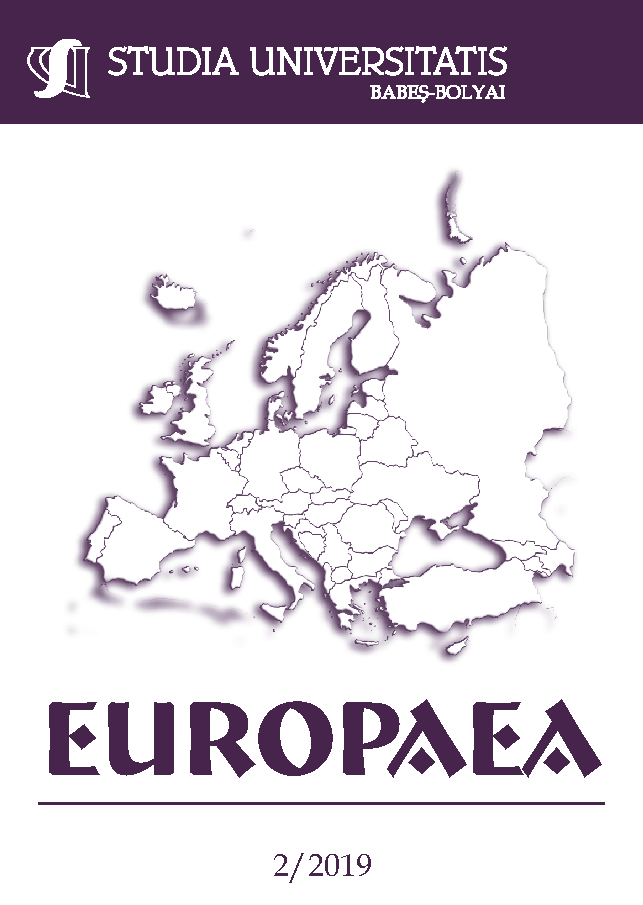“THE FLAG STILL STANDS!” THE POLITICAL RECONVERSION OF THE INTERNALLY EXILED INDEPENDENTISTS OF CASAMANCE
DOI:
https://doi.org/10.24193/subbeuropaea.2019.2.08Keywords:
militancy, political careers, identity, veterans, veterans, peace mechanismsAbstract
The article analyses the different trajectories of former combatants of the Mouvement des Forces Democratiques de Casamance (MFDC) in southern Senegal, focusing on the political prosecution of the armed struggle. If the independence demand is often present in their speech, it takes different forms and allows them to enter the local political life or become agents of the peace process. It is about trying to understand the motivations of actors and contextualize them in order to identify the mechanisms that lead to long-term dialogue and conflict resolution.References
Amnesty International (1998), Sénégal. La terreur en Casamance, Paris: Les éditions françaises d’Amnesty International.
Awenengo-Dalberto, Séverine (2006), „A qui appartient la paix ? Résolution du conflit, compétitions et recompositions identitaires en Casamance (Sénégal) ”, Journal des anthropologues no. 104-105, 79-108.
Awenengo-Dalberto, Séverine (2008), „Le conflit casamançais. Matrices, émergences et évolutions”, Revista de Politica International, no. XI-XII, 116-145.
Bassène, René Capain (2015), Casamance. Récits d’un conflit oublié (1982-2014), Paris: L’Harmattan.
Diallo, Boucounta (2009), La crise casamançaise. Problématique et voies de solution, Paris: L’Harmattan, 2009.
Diédhiou, Paul (2011), L’identité joola en question (Casamance). La bataille idéologique du MFDC pour l’indépendance, Paris: Karthala
Evans, Martin (2003), „Ni paix ni guerre : the Political Economy of Low-Level Conflict in the Casamance”, in Sarah Collisons (ed.), Power, Livehoods and Conflict : Case Studies in Political Economy Analysis for Humanitarian Action, London, Overseas Development Institute, Background for Humanitarian Policy Group Report no. 13, 37-52.
Foucher, Vincent (2003), „Pas d’alternance en Casamance ? Le nouveau pouvoir sénégalais face à la revendication séparatiste casamançaise”, Politique africaine no. 91, 101-119.
Foucher, Vincent (2007), „The Resilient Weakness of Casamançais Separatists” in Morten Boas; Kevin C. Dunn, African Guerrillas: Raging Against the Machine, Boulder: Lynne Rienner Publisher.
Gasser, Genevièv (2001), „Etre jeune à Ziguinchor”, Autrepart no. 18, 143-156.
Gasser, Geneviève (2002), „ : que veulent les opposants armés casamançais ? ” in Momar-Coumba Diop, Le Sénégal contemporain, Paris: Karthala, 459-498.
Manga, Mohamed Lamine (2012), La Casamance dans l’histoire contemporaine du Sénégal, Paris: L’Harmattan.
Marut, Jean-Claude (1994), „Le dessous des cartes casamançaises. Une approche géopolitique du conflit casamançais” in François George Barbier-Wiesser (dir.), Comprendre la Casamance. Chronique d’une intégration contrastée, Paris: Karthala, 193-211.
Marut, Jean-Claude (1994), „Guerre et paix en Casamance. Repères pour un conflit, 1990-1993” in François George Barbier-Wiesser (dir.), Comprendre la Casamance. Chronique d’une intégration contrastée, Paris, Karthala, 213-232.
Marut, Jean-Claude (2002), „Le problème casamançais est-il soluble dans l’Etat-nation ?” in Momar-Coumba Diop, Le Sénégal contemporain, Paris: Karthala, 425-458.
Marut, Jean-Claude (2010), Le conflit de Casamance. Ce que disent les armes, Paris: Karthala.
Ndiaye, Amadou (2018), Conflits armés et résilience, dans l’univers des femmes de Kaguitte (Casamance), Saint-Denis: Edilivre.
Roche, Christian (2016), La Casamance face à son destin, Paris: L’Harmattan.
Ryan, Jeffrey J. (1994), „The Impact of Democratization on Revolutionary Movements”, Comparative Politics no. 27(1), 27-44.
Downloads
Published
How to Cite
Issue
Section
License
Copyright (c) 2019 Studia Universitatis Babeș-Bolyai Europaea

This work is licensed under a Creative Commons Attribution-NonCommercial-NoDerivatives 4.0 International License.






